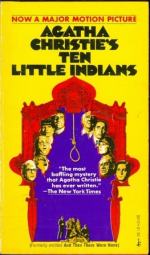|
This section contains 453 words (approx. 2 pages at 400 words per page) |

|
Structure
The novel is structured as a mystery, although Christie adds her own innovations. Stories of good versus evil have been told since the beginning of time, but the mystery story emerged in the second half of the nineteenth century with the works of Edgar Allan Poe and Arthur Conan Doyle. The mystery structure includes motives and alibis, detection, clues, and red herrings (diversions from the real culprit). Characters become suspects before the true one is unmasked. The hero discovers the villain only at the climax of the story, and then, in the denouement, explains how the crime was committed. Christie carries on several of the traditions of the mystery but adds some new twists. The characters in Ten Little Indians present motives for past crimes and alibis for the murders on the island. Judge War-grave, who at the end of the novel, identifies the murderer and puts all...
|
This section contains 453 words (approx. 2 pages at 400 words per page) |

|




